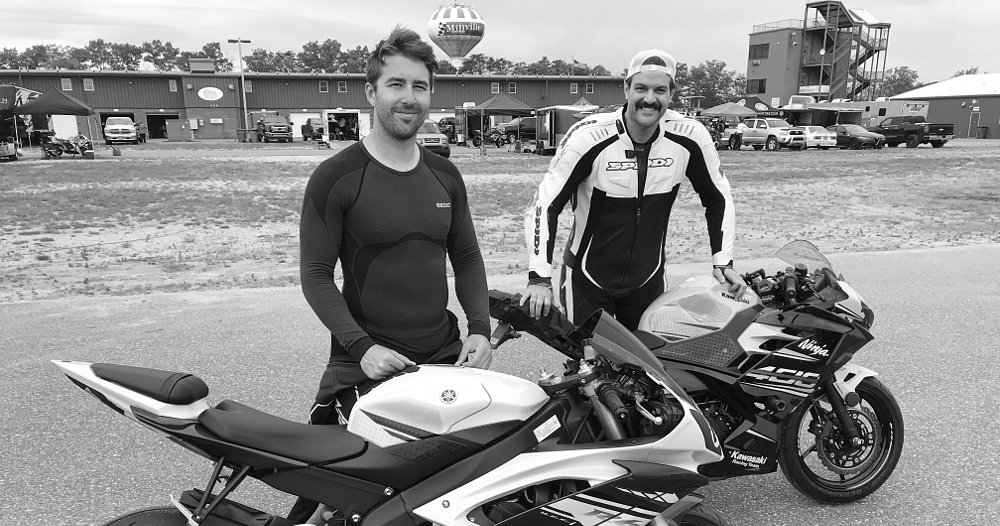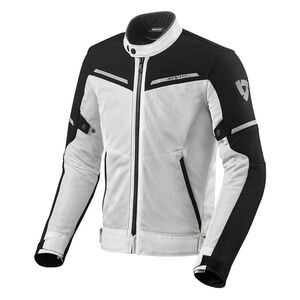If you’ve been around motorcycles long, chances are you've seen the rider in the T-shirt, cargo shorts, and flip flops when it's 100 degrees outside. Maybe you've been tempted to be that rider. Don't be that guy! (If you're reading this and you're feeling a bit attacked, you're probably already that guy, but I'm here to tell you it's never too late to change.)
It's understandable. When it's really hot, a T-shirt is going to feel pretty good, especially for a short ride. But what about highway speeds and longer rides? Take a June bug or three to the chest at 70 mph and let me know how you feel. More importantly, I think we can all agree that a T-shirt isn’t going to protect you much should you meet the tarmac.
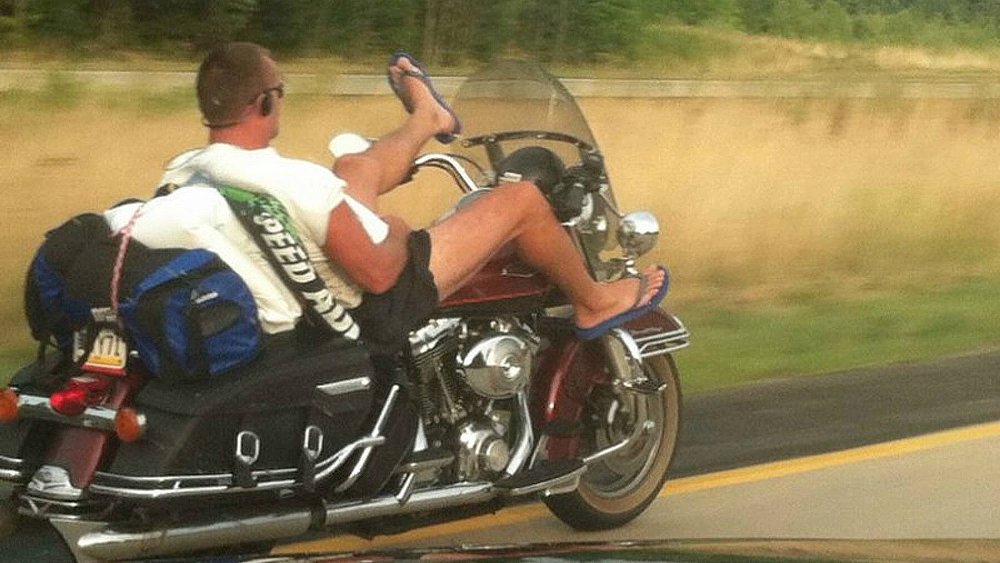
With that in mind, I’ve put together some key features and a list of some of the best summer motorcycle jackets. There are ways to balance protection and comfort during the heat of the summer. We'll have to work on the flip flops some other time...
Key features for summer riding jackets
Mesh: First and foremost, mesh is going to be the key component to keeping you cool and comfortable during the summer. It allows maximum airflow while still providing a barrier between your skin and the tarmac, elements, sunburning rays and whatever else you might encounter on the road.
Construction and protection: Since most summer jackets have a textile and mesh main construction, I typically look for a good amount of reinforcement at the shoulders and elbows for extra abrasion resistance. 600D (if you don't know the term, see the FAQ below) is generally adequate as anything more can get a bit heavy and stiff, which is not always ideal when you’re looking for something lightweight and summer-oriented.
Of course, protection is important on two wheels regardless of the season, so CE1 or CE2 armor at the shoulder and elbows is a must. If no back protector is included, make sure there's a pocket to add one later.
Comfort: If you’re used to leather, you'll find that textile jackets don’t break in or have the same amount of give found in leather jackets. Relief stitching, a gusset, or some type of accordion around the shoulders goes a long way with textile jackets. Unfortunately, not a lot of summer textile jackets have this and while I wouldn’t consider it a deal breaker, it certainly helps with the overall comfort.
Removable layers: When it’s 100 degrees outside, I’m not really looking for the most versatile jacket. I just want my jacket to protect me and maximize airflow. If it comes with a removable wind-blocking or waterproof layer, however, that’s a bonus that I generally don’t need on the hot days but can come in handy when the weather changes.
With all that in mind, let's look at some specific motorcycle jackets I recommend for hot weather.
Top five men’s summer jackets
The REV’IT! Eclipse is what I like to consider the “every-rider” jacket. The styling is tasteful and it sits comfortably on naked bikes, touring machines, cafe racers, scooters, etc.
It costs just $180, which is incredibly affordable when considering the average price of a moto jacket. And, like pretty much every moto jacket these days, the Eclipse includes CE1 armor at the shoulders and elbows.
This jacket has a textile main construction with mesh at the chest and inside the arms. One thing I always look for with textile mesh jackets is reinforcement at the shoulders and running down the arm. Most jackets will have a 600D main construction or some type of reinforcement in those high abrasion zones, but a few brands simply use a polyester main construction with no reinforcement and no 600D. A simple polyester construction isn’t really going to do much for me if I’m sliding down the tarmac. Just something to keep an eye out for when you’re shopping around.
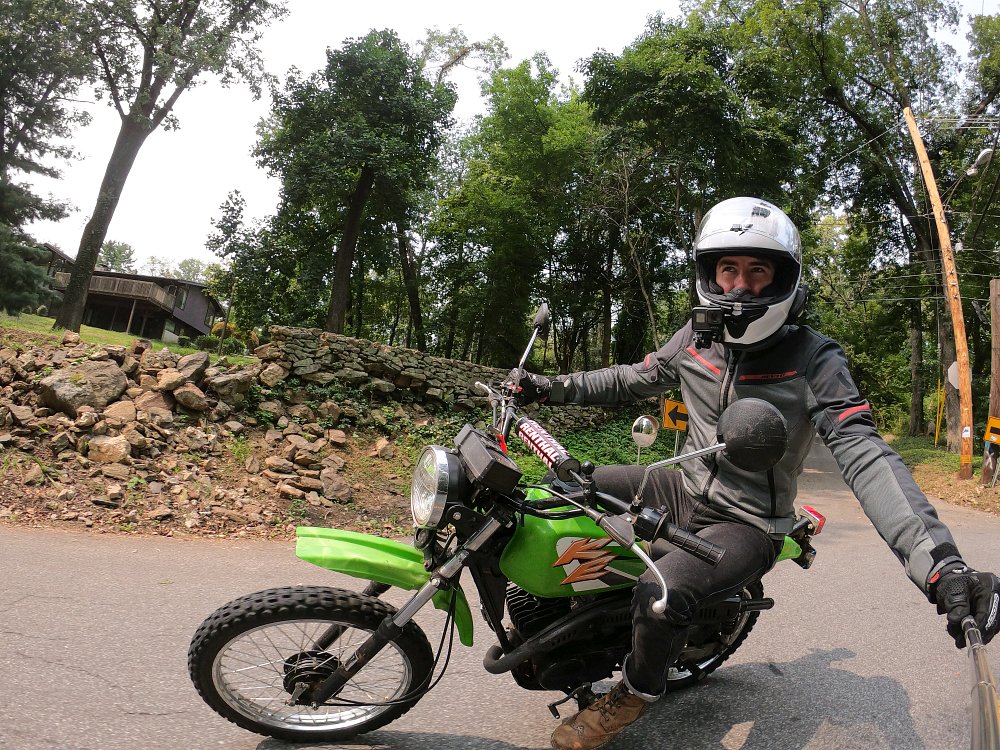
The Airwave 3 is another great alternative within REV’IT!’s line with very similar features. The Airwave has a slightly stronger exterior with some PWR mesh and the armor is a bit more comfortable compared to the Eclipse. But for the price, style, protection, and the amount of airflow the Eclipse jacket provides, it’s easily one of my favorite options.
When I think of the brand Klim, I immediately think of adventure and dual-sport riding gear. In addition to their exceptional build quality in the adventure motosphere, you can find some options such as the Klim Induction jacket that are a bit more universal and not necessarily geared towards the adventure enthusiast.
The Induction jacket made its big debut in 2012 and has stood the test of time. It continues to be one of the best summer jackets Klim has produced. Personally, I wish they'd kept the removable waterproof liner, but it’s still a solid option without it. You’ll find CE1 vented armor included at the shoulders, elbow, and back.
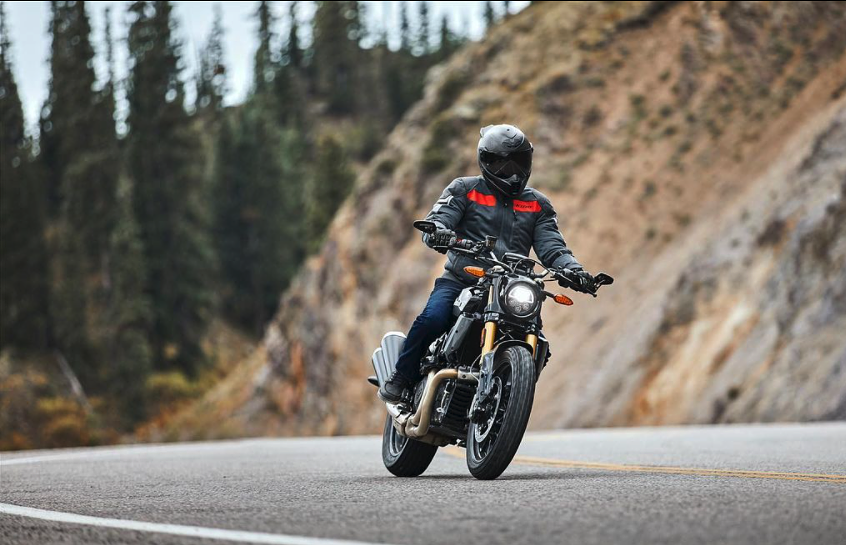
The Induction’s 500D reinforcement and the Karbonite industrial-grade, high-strength mesh make this jacket feel a bit more substantial than a lot of alternative summer-weight jackets, but it doesn't sacrifice the main benefit we’re looking for: airflow.
And, for anyone paying attention to those Euro standards, the Induction is CEAA-certified. If that’s still not cutting it, you could step up a notch in protection and check out the Klim Induction Pro.
If you’re looking for versatility, the Tornado 3 is going to be tough to beat as a summer option. The versatility comes from the detachable two-in-one thermal liner and detachable Hydratex liner. With all the mesh found on this jacket, there’s no shortage of airflow, but the liners let you stretch this beyond the summer months and be better prepared when nature throws some curve balls your way.
The Tornado 3 is also equipped with CE2 Seeflex armor at the shoulder and elbow. No back protector is included but I appreciate the Level 2 protection as many of these lightweight summer options are only sporting CE1 protection.
Personally, I’ve owned the Tornado 2 for a few years now and it’s still going strong. The Tornado 3 sets the bar pretty high when you consider the price, style, and versatility.
Dainese Super Speed textile jacket
For those more spirited summer rides, the Dainese Super Speed textile jacket is worth a look. It’s a bit more sport-oriented and fits well on anything from a Triumph Thruxton to a Ducati Panigale.
While this jacket only includes CE1 armor at the shoulder and elbow, it is one of the few textile jackets with aluminum sliders on the shoulders. It also comes equipped with a windproof insert that's perfect for those chilly mornings.
Alpinestars Viper v2 Air jacket
If you’re a fan of Alpinestars and you’re looking for a summer jacket with CE2 protection, the Viper v2 is one of the most affordable options in their line.
I’m also a fan of the T-GP Plus R v3 Air jacket, but if you’re comparing the two, the Viper v2 has more mesh on the chest and the CE2 Bio armor is very comfortable. On top of that, the Viper v2 is more affordable.
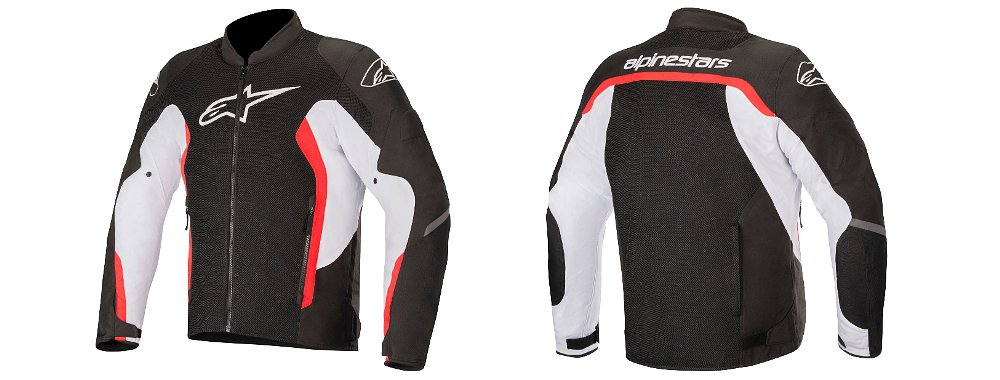
I mention the T-GP Plus R v3 Air jacket because a lot of riders compare this with the Viper and often wonder which option is better. But, while we're on the subject of the T-GP Plus R v3 Air jacket, does anyone else hate the nomenclature Alpinestars uses? It makes sense for their catalog but good luck telling a friend or fellow rider what jacket you’re wearing.
Rider A: "Hey, nice jacket! What model is that?"
Rider B: "Oh, it's the Alpinestars TP Plus 3 Air Jacket… I think? Something like that. They’ve also got the GP Plus R v3 jacket, GP Plus R V3 Rideknit, GP Plus R v3 Airflow jacket, GP Pro Airflow Leather jacket and a few others."
Rider A: "What are you saying?!"
Rider B: "I have no idea!"
I digress. I just figure if we joke about it enough, Alpinestars will listen.
Speaking of listening, Alpinestars and a handful of other manufacturers have been listening to feedback about women’s riding gear. It's certainly not perfect, but we finally have some options that aren't covered in pink accents, skulls, and flower graphics. I'm gonna call that a win. Of course, those options still exist, so don’t get too concerned if you enjoy that style.
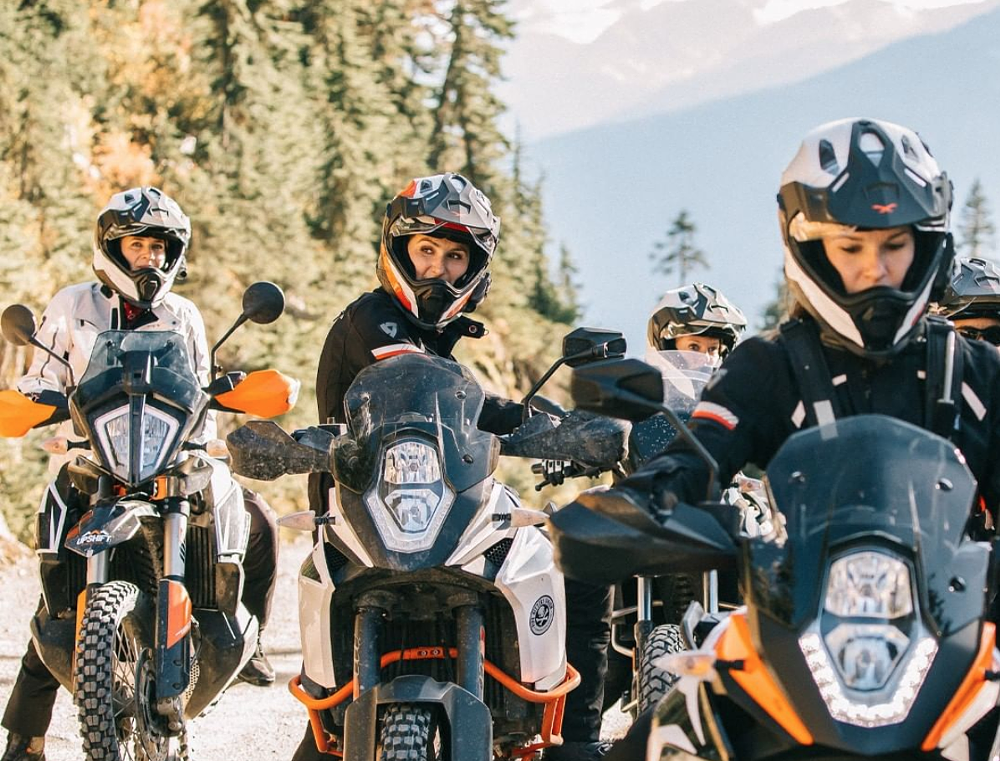
Top five women’s summer jackets
The Eclipse strikes again! It’s a big hit in the men’s category and it may just be the most popular summer jacket available in a cut for women. It’s one of the best bang-for-the-buck options when style, price, protection, and functionality are taken into consideration.
The Avalon jacket has a Karbonite mesh chassis and is now more comfortable and flexible than the previous generation. It also features 500D Cordura overlays at the shoulders and elbows with CE1 armor throughout. The armor is ventilated to help maximize airflow without sacrificing protection.
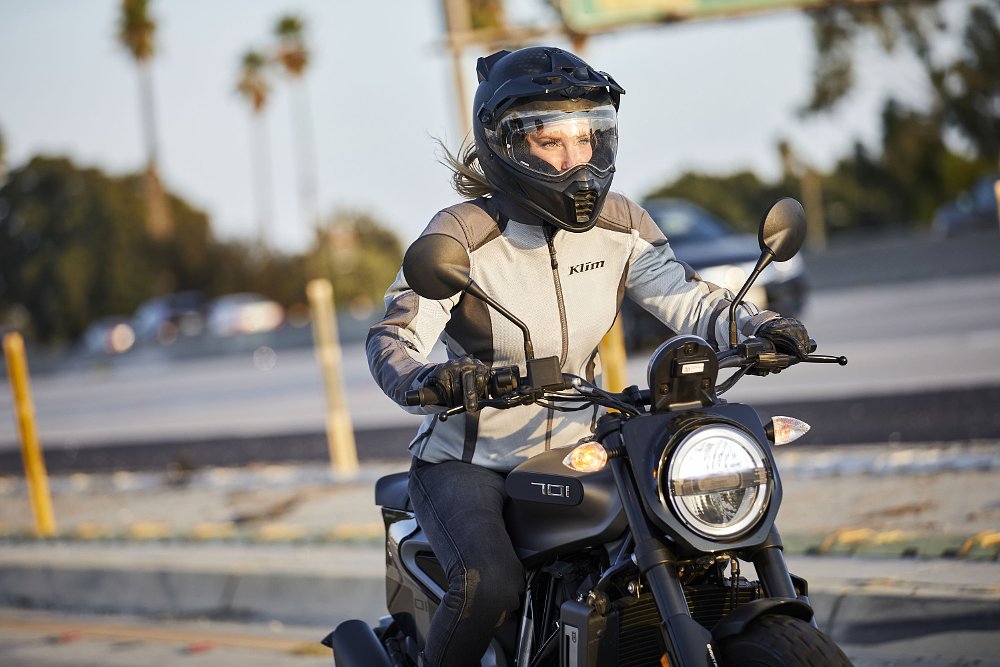
This jacket comes equipped with a CEAA rating and you'll find an ample amount of airflow with all the mesh located at the chest, back, and arms.
The Air-Frame D1 jacket is a sport to sport-touring jacket equipped with mesh panels at the chest, arms, and the entire back. The Air-Frame also comes equipped with a removable windproof liner and utilizes a quick-dry fabric in the main construction.
For riders looking for a brand that provides a more relaxed fit, I recommend a look at Icon. The Icon Contra 2 jacket is a bit more sport-oriented with a slight pre-curve on the arms but because it’s a bit more relaxed, it also works well in the three-quarters to upright riding position.
Per usual for summer moto jackets, you get lots of mesh at the chest, arms, and back. In addition to the removable thermal liner, you’ll find the Contra 2 is equipped with D3O armor at the shoulders and elbows. The back protector is included, too.
REV'IT! Airwave 3 jacket • REV'IT! Torque jacket • REV'IT! Tornado 3 jacket
Yes, I know I said “Top five summer jackets,” but these are worth looking at. Without making an honorable mentions section, here's a brief summary.
The Airwave 3 offers a touring fit and a step up in protection from the Eclipse with armor that's a bit more comfortable, all for approximately $50 more than the Eclipse. The Torque has a race fit and similar protection to the Airwave but comes equipped with a detachable Hydratex G-liner (aka waterproof). The Tornado 3 offers a touring fit and the best protection of all four, with the most versatility, thanks to its detachable thermal liner and waterproof liners.
Frequently asked questions: Summer jackets
Is leather more protective and abrasion-resistant than textile?
Short answer, yes. But, textile has come a long way over the years and I really don’t hesitate to throw on my textile jackets when it’s hot outside. Most summer textile jackets nowadays do a great job of providing good protection while still incorporating mesh in all the right places. A lot of riders gravitate towards a textile and mesh combo for the summer because it simply breathes better than leather does and is lighter.
Additionally, textile jackets often offer more versatility than leather options, with waterproof, thermal and wind-blocking layers. If you insist on the maximum protection, leather is it. Just look for the most perforated option you can find if you plan to use it in hot summer weather.
Do textile jackets break in?
Textile jackets relax a bit with some regular use but nowhere near as much as leather breaks in. When I try on a leather jacket, a bit more on the snug side is OK because I know it’s going to relax and become more form-fitting with time. For textile, I generally err on the side of having a little comfort room. You want your textile jackets to fit snugly and keep the armor in place but it should be plenty comfortable in the riding position. It's important to sit on a bike in your typical riding position when trying on a new jacket, especially textile.
Should I wear a base layer under my summer jacket? Will that help keep me cooler?
Absolutely! Base layers are a great way to help keep your body nice and cool. They basically act as a second layer of skin so not only will they wick moisture away to help keep you cool and dry, but they also make wearing your jacket a bit more comfortable, too. I’ve yet to find any negatives wearing base layers with moto gear, summer or winter.
Do those cooling vests actually do anything?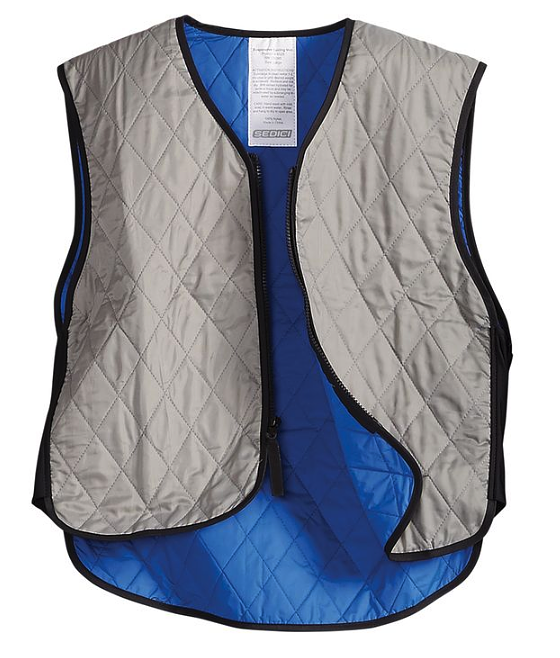
I’ve used a cooling vest on two different occasions. It worked for a while and then it was eventually dry and I just had a vest on. Dunking a vest in water, wringing it out, then wearing this damp piece of material — personally, it’s not for me. If you ride in a very hot climate and you’re looking for any advantage you can get to stay cool for a bit, you might feel differently.
I see a lot of “600D” with textile jackets. What is that?
600 denier is a unit of measurement and indicates the fiber weight and thickness of the textile material. The thicker the denier, let’s say 1200D, the stronger it will be. However, there is a bit of a tradeoff. Sure, 1200D is stronger but the thicker the material is, the more uncomfortable it is to physically wear. This is often why you’ll see smaller patches of material in the 1000-to-1200 range in impact areas, while you might see a full sleeve made of 600D.
No shortage of summer jacket options
There’s a lot of summer jacket options available that didn’t make the list. This doesn’t mean one of them isn't a great option for you. It's just that the jackets on this list have been tested by our team and the masses and have won a stamp of approval.
Luckily, this article will be on the internet where everyone has an opinion, so if you have a summer jacket recommendation, share it below.












